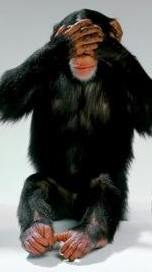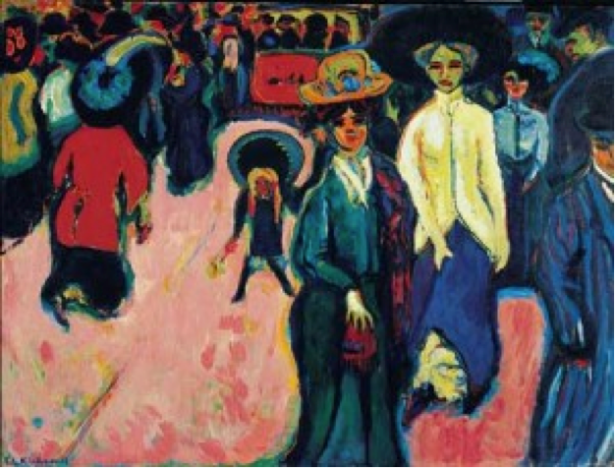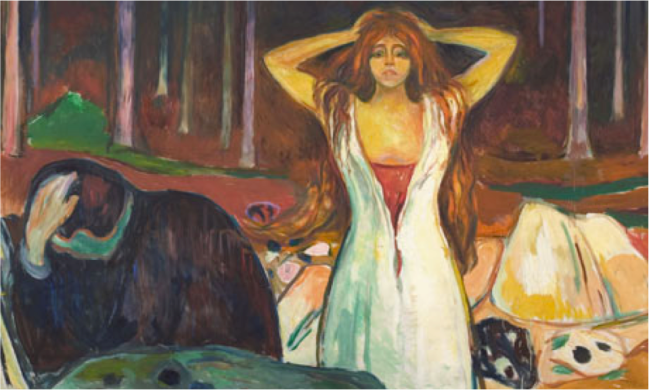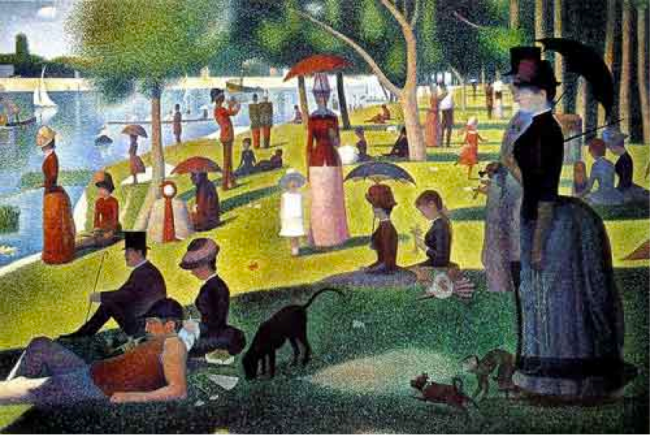
In her short essay “Interpreting Poetry: The Literary Habitus,” Judith Stewart Shank reflects that “[a literary work of art] is understood through contemplation of its images and their interrelation—the way in which the individual images come together to form a single thing, a unity” (1). If Dr. Shank is right, one of the most profitable methods of analyzing any literary work of art is to examine the imagery being used in the work and, perhaps more importantly, to trace the individual uses of that imagery in an attempt to discern how they come to form an harmonious and organic symbolic system across the work as a whole. In James Joyce’s A Portrait of the Artist as a Young Man, one could pick up on any number of images which appear and reappear throughout the novel, for example: birds and flying; gardens, roses, flowers; heat and cold; light and darkness; water, the sea, and drowning; to name just a few. Two of the most significant images, however, are those centering around eyes, blindness, and glasses, first, and second, hands, fingers, and fingernails. Joyce makes clever use of both these images throughout the novel. For our purposes, however, it will be expedient to look at only those instances which occur in the first chapter.
The first such occurrence of the blindness image is almost immediate. Stephen repeats a nursery rhyme he heard from Dante:
Pull out his eyes,
Apologise,
Apologise,
Pull out his eyes.
Apologise,
Pull out his eyes,
Pull out his eyes,
Apologise. (Joyce 4)
Leaving aside for the moment the poignant allusion to the Prometheus myth, in just the first few words of the novel we can already distinguish a certain fascination with eyes, and particularly the loss of them, on the part of the narrator (and perhaps Stephen somewhat subconsciously). Later, at the Christmas Dinner, Mr Casey tells a story in which he got into a shouting match with a women of different political convictions and ended it by spitting used tobacco juice into her eye: “Phth! says I to her like that, right into her eye. He clapped a hand to his eye and gave a hoarse scream of pain,” to which she responds, “I’m blinded! I’m blinded and drownded! . . . I’m blinded entirely” (36). Shortly thereafter, when Stephen has returned to school, his glasses get broken in an accident so that he is unable to see to study or in class: “The lines of the letters were like fine invisible threads and it was only by closing his right eye tight tight and staring out of the left eye that he could make out the full curves of the capital” (46), and later, on his way to visit the rector, he muses that “It was dark and silent and his eyes were weak and tired with tears so that he could not see” (57).
The hands image first appears with the first of many passing references to hands and descriptions of them: “Nasty Rochy had big hands” (5). Later, though, Stephen describes Eileen’s hands in greater and more meaningful detail: “Eileen had long white hands. One evening when playing tig she had put her hands over her eyes: long and white and thing and cold and soft” (35). Of course, this reflection leads him to connect Eileen with the ivory and Tower of Ivory images involved in his idea of the feminine. After this, Stephen explains the origin of Tukser Boyle’s being called “Tusker,” clarifying, however, that “some fellows called him Lady Boyle because he was always at his nails, paring them” (43). This is immediately followed by another reference to Eileen and hands precipitated by his earlier reflection on “Lady Boyle”: “Eileen had long thin cool white hands too because she was a girl” (43). Later, Stephen describes another pair of hands in reference to “Lady Boyle”: “Mr Gleeson” he considers, “had round shiny cuffs and clean white writsts and fattish white hands and the nails of them were long and pointed. Perhaps he pared them too like Lady Boyle. But they were terribly long and pointed nails. So long and cruel they were though the white fattish hands were not cruel but gentle” (46). By far the most important instance of the hand image in the first part, though, comes with Stephen’s unjustified punishment:
Stephen closed his eyes and held out in the air his trembling hand with the palm upwards. He felt the prefect of studies touch it for a moment at the fingers to straighten it and then the swish of the sleeve of the soutane as the pandybat was lifted to strike. A hot burning stinging tingling blow like the loud crak of a broken stick made his trembling hand crumple together like a leaf in the fire: and at the sound and the pain scalding tears were driven into his eyes. (51)
You will notice that by being forced to close his eyes before his punishment, and by the “scalding tears” after, the two images have been brought together. Blindness, it would seem, goes along with pain in one’s hands, or the loss of their use. The question remains, what do these images represent?
Well, for the first image, blindness, Stephen gives us our answer himself in the fifth part as part of his sermon on beauty: “Aquinas, said Stephen, says that is beautiful the apprehension of which pleases. . . . Pulcra sunt quæ visa placent. He uses the word visa, said Stephen, to cover esthetic apprehensions of all kinds, whether through sight or hearing or through any other avenue of apprehension” (225). In short, the fixation on eyes, glasses, blindness, and similar such imagery is connected with the artist’s vision—with his ability to behold and recognize the beautiful. As Stephen points out, however, this artistic vision is not only external. It refers also to “esthetic apprehensions of all kinds,” which would include the imagination itself—the source from which any future work of art must spring. Stephen reflects as much toward the end of the novel when he experiences a kind of flash of inspiration along the lines of Joyce’s “epiphany,” saying that, “the instant flashed forth like a point of light and now from cloud on cloud of vague circumstance confused form was veiling softly its afterglow. O! In the virgin womb of the imagination the word was made flesh” (236). Without the imagination, without the vision and interior sight to see the significance, beauty, and pathos in the world around us, there would be no art. Similarly, should the artist receive such a vision, there is one thing else required for the work of art to come into actual existence—the hands to shape it into its proper form. Insofar as Stephen represents the archetypal artist allegorically, to beat Stephen’s hands, then, and blind him with the “scalding tears” that result from the pain, is to rob him of his artistry—and it is rigid dogmatism and obstinate cruelty which accomplishes it.
Works Cited
Joyce, James. A Portrait of the Artist as a Young Man. Ed. Seamus Deane. New York: Penguin, 1992. Print.
Shank, Judith Stewart. “Interpreting Poetry: The Literary Habitus.” Readings in Literary Criticism. Ed. Judith Stewart Shank. Fort Worth: CSTM P, 2009. Print.
– Thomas Beyer





